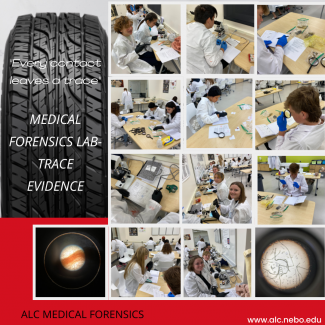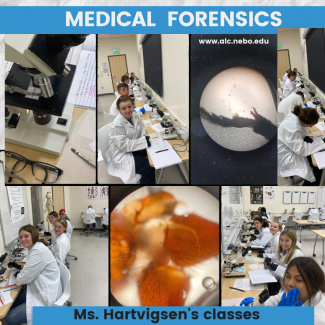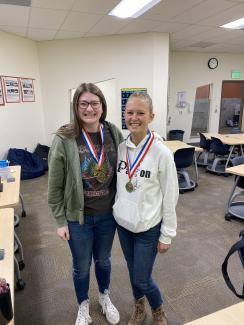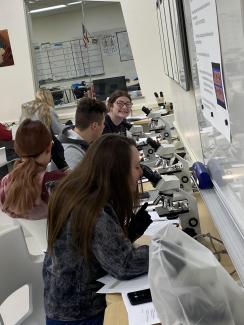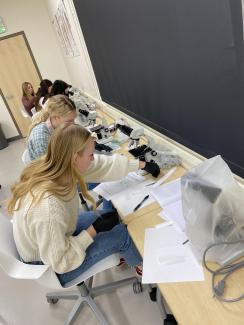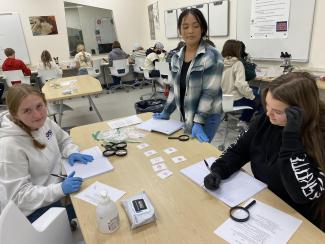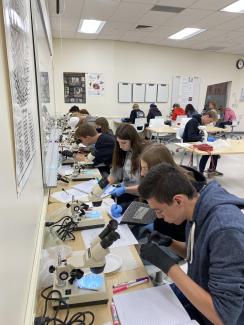Sherlock Holmes and Tires at the ALC?
Edmond Locard was known as the Sherlock Holmes of France.
He formulated the basic principle of forensic science "Every contact leaves a trace"
Students in the Medical Forensic class at the ALC tested to see if this was true. Students brought to class a shirt they had worn the day before. They then took packing tape and picked up what they could off their shirts. Students then looked at what they had picked up the day before under the microscope.
Students were amazed at what they picked up in a day. Students also looked at ballistic evidence, lip prints, compared sand and rocks, and glass and plastic as well as matching tire prints.
It was a good day to look at trace evidence.

